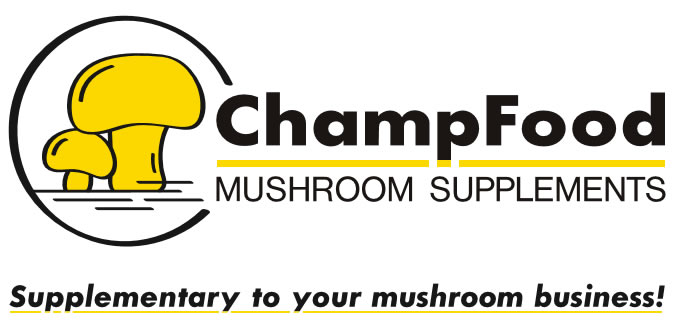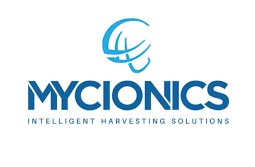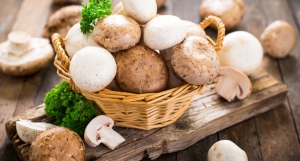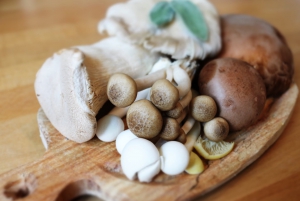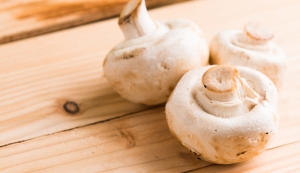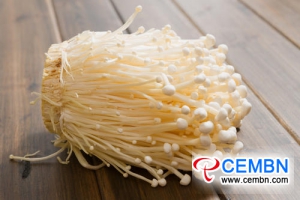
Mushroom Matter
Welcome on our platform. Why MUSHROOM MATTER? Because mushrooms play an important role in our lives as well in business. Our goal is to bring the world the very latest mushroom news with the upmost care to support the positioning of our beloved Mushroom.
Help us with our positive mushroom campaign!
We are all experiencing difficult and challenging times. Times we have never experienced before and hopefully we can all recover from it. Our health is the most important thing to focus on as well as taking care of eachother. Maybe we are even more closer than ever!
This corona virus has besides to our health, also a large impact on mushroom businesses, hopefully you all have found ways to cope with it. Maybe even accelerate your innovation roadmap!
We as Mushroom Matter haved asked ourselves the question how we can become more closer and more meaningful to people around the globe during this period. So we are going to focus on the health benefits of mushrooms and make sure that the mushroom finds it's way to the consumer even more.
We are starting a positive mushroom campaign on our website and social media channels #mushroomsmatterforyourhealth and would kindly appreciate your help by sending us information you have on mushrooms and why they are so important for our health and future*. Please send us your input to This email address is being protected from spambots. You need JavaScript enabled to view it.
* information we are allowed to use in relation to GDPR and authorship
Feed Your Immune System
The immune system is made up of a network of cells, tissues and organs that work together to protect the body against infection and maintain overall health. Mushrooms, like other fruits and vegetables, can play a positive role in supporting a healthy immune system.
The 2015-2020 Dietary Guidelines for Americans1 emphasizes the importance of creating a healthy eating pattern to maintain health and reduce the risk of disease. Suggestions include:
• Make half your plate fruits and vegetables.
• Move to low-fat and fat-free milk or yogurt.
• Make half your grains whole grains.
• Focus on whole fruits and vary your vegetables.
• Drink and eat less sodium, saturated fat and added sugars.
• Vary your protein routine.
Nutrients Important for Overall WellnessThere are a variety of micronutrients, as identified by the Linus Pauling Institute at Oregon State University2, that are important for supporting a healthy immune system including selenium and vitamins D and B6, which can be found in mushrooms.
As COVID-19 tightens its grip on the world, more and more of us are naturally looking for ways to help stave of contracting the virus, whether it’s for ourselves, or to protect those around us who might be at higher risk of developing serious complications.
But while there’s no vaccine to ward off coronavirus (though scientists around the world are working tirelessly on creating one) there are some easy, natural steps you can take to strengthen your immune system to help you fight of this virus, and illnesses like it.
Read the full article here.
Using steam for humidifying
In many systems steam is used for humidifying the grow rooms. It’s a good solution to keep the right climate in the grow rooms but just keep the amount of steam going into the grow room under control. Let me explain what I mean by that.
Especially on the moment just after cool down we get a lot of steam in the grow rooms for humidity to keep the right, set humidity level. That also brings in a lot more heat in the room and especially in summer period that will give extra demand on your cooling. After some time, you will see in the computer that not only the steam valve will keep opening but the cooling as well, one will bring in humidity, the other will bring it down. The result is loss of energy and not a pleasant climate in the room with a RH level variating from very high too low, due to a lot of steam used by the climate control unit. It will be more visible under the air bags, where the steam comes out, and the RH on the growing surface will be higher. The mycelium will continue to grow there, if you compare it with the rest of the room, and less pins will grow out on those spots.
By simply wetting the floor the first 3 days after cool down you can minimize the steam by bringing in the extra moisture with the wet floors. You can do that 3 times/day if needed. Watch the steam demand in your climate computer and that will tell you if you need to wet the floor.
Erik de Groot
This email address is being protected from spambots. You need JavaScript enabled to view it.
The coronavirus presents many uncertainties, and none of us can completely eliminate our risk of getting COVID-19. But one thing we can do is eat as healthily as possible.
If we do catch COVID-19, our immune system is responsible for fighting it. Research shows improving nutrition helps support optimal immune function.
Micronutrients essential to fight infection include vitamins A, B, C, D, and E, and the minerals iron, selenium, and zinc.
Here’s what we know about how these nutrients support our immune system and the foods we can eat to get them.
Shaanxi Xinqiao Market: Analysis of Mushroom Price
According to mushroom quotation provided by Shaanxi Xinqiao Mushroom Wholesale Market, on March 25, Enoki mushroom, King oyster mushroom, White beech mushroom, Brown Shimeji mushroom, Seafood mushroom, Agrocybe cylindracea and Button mushroom are 7 varieties that show price fall.
1.Price of Enoki mushroom has dropped from 8 to 6 CNY per kg, indicating 25% of decline range.
2.Price of King oyster mushroom has dropped from 8 to 6.5 CNY per kg, indicating 18% of decline range.
3.Price of White beech mushroom has dropped from 11.6 to 10.8 CNY per kg, indicating 6% of decline range.
4.Price of Brown Shimeji mushroom has dropped from 11.6 to 10.8 CNY per kg, indicating 6% of decline range.
5.Price of Seafood mushroom has dropped from 10 to 7.5 CNY per kg, indicating 25% of decline range.
6.Price of Agrocybe cylindracea has dropped from 11.2 to 9.6 CNY per kg, indicating 14% of decline range.
7.Price of Button mushroom has dropped from 20 to 14.2 CNY per kg, indicating 29% of decline range.
“Price of Superior Shiitake mushroom, Shiitake mushroom and Oyster mushroom is respectively at 14 CNY, 12 CNY and 5 CNY per kg in our market,” introduces manager of Shaanxi Xinqiao Mushroom Wholesale Market.
Liaoning Dandong Market: Analysis of Mushroom Price
According to mushroom quotation provided by Liaoning Dandong Vegetable Wholesale Market, on March 24, Shiitake mushroom, Pholiota nameko, King oyster mushroom, Agrocybe cylindracea, Brown Shimeji mushroom, White beech mushroom and Cordyceps militaris are 7 varieties that show price fall.
1.Price of Shiitake mushroom has dropped from 10 to 8 CNY per kg, indicating 20% of decline range.
2.Price of Pholiota nameko has dropped from 12 to 10 CNY per kg, indicating 16% of decline range.
3.Price of King oyster mushroom has dropped from 9 to 7.5 CNY per kg, indicating 16% of decline range.
4.Price of Agrocybe cylindracea has dropped from 14 to 12 CNY per kg, indicating 14% of decline range.
5.Price of Brown Shimeji mushroom has dropped from 15 to 12.5 CNY per kg, indicating 16% of decline range.
6.Price of White beech mushroom has dropped from 15 to 13.3 CNY per kg, indicating 11% of decline range.
7.Price of Cordyceps militaris has dropped from 16 to 14 CNY per kg, indicating 12% of decline range.
On the contrary, on March 24, Oyster mushroom and Seafood mushroom are 2 varieties that show price rise.
1.Price of Oyster mushroom has risen from 8 to 10 CNY per kg, indicating 25% of increase range.
2.Price of Seafood mushroom has risen from 5.6 to 6.6 CNY per kg, indicating 17% of increase range.
“Price of Button mushroom and Enoki mushroom is respectively at 16 and 5 CNY per kg in our market,” introduces manager of Liaoning Dandong Vegetable Wholesale Market passionately.
According to mushroom quotation provided by Shandong Huangshan Vegetable & Fruit Wholesale Market, on March 20, Superior Shiitake mushroom, Oyster mushroom, King oyster mushroom, Brown Shimeji mushroom and White beech mushroom are 5 varieties that show price fall.
1.Price of Superior Shiitake mushroom has dropped from 18 to 14 CNY per kg, indicating 22% of decline range.
2.Price of Oyster mushroom has dropped from 8 to 5 CNY per kg, indicating 37% of decline range.
3.Price of King oyster mushroom has dropped from 7.5 to 6.5 CNY per kg, indicating 13% of decline range.
4.Price of Brown Shimeji mushroom has dropped from 15 to 11.6 CNY per kg, indicating 22% of decline range.
5.Price of White beech mushroom has dropped from 13.3 to 11.6 CNY per kg, indicating 12% of decline range.
On the contrary, on March 20, Button mushroom, Enoki mushroom and Agrocybe cylindracea are 3 varieties that show price rise.
1.Price of Button mushroom has risen from 8 to 9 CNY per kg, indicating 12% of increase range.
2.Price of Enoki mushroom has risen from 4.5 to 5 CNY per kg, indicating 11% of increase range.
3.Price of Agrocybe cylindracea has risen from 8 to 10 CNY per kg, indicating 25% of increase range.
“Price of Shiitake mushroom and Seafood mushroom is respectively at 10 and 7 CNY per kg in our market,” introduces manager of Shandong Huangshan Vegetable & Fruit Wholesale Market.


